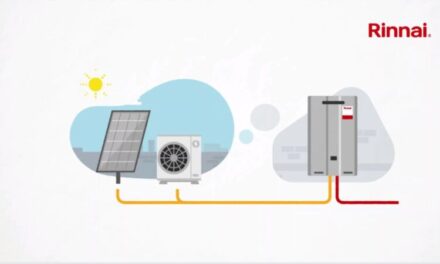 A “Birmingham screwdriver” is a hammer. It’s the familiar, trusted, simple tool, applied to every task, regardless of appropriateness. Those of a certain age might credit that attitude with the glory that was the Austin Allegro – a car rumoured to be faster going backwards than forwards. By Dr Alastair Martin, founder and chief strategy officer at Flexitricity.
A “Birmingham screwdriver” is a hammer. It’s the familiar, trusted, simple tool, applied to every task, regardless of appropriateness. Those of a certain age might credit that attitude with the glory that was the Austin Allegro – a car rumoured to be faster going backwards than forwards. By Dr Alastair Martin, founder and chief strategy officer at Flexitricity.
Those were also the days of the Central Electricity Generating Board, the Hydro Board, and a grey carnival of other Boards. Electricity was something the Government did to you. And the Birmingham screwdriver of the electricity industry was the central power station.
The engineering achievements of big power in that time must be acknowledged. From Cockenzie to Drax to the first round of combined-cycle gas turbines (CCGTs), the transformation has been astonishing. Technology hasn’t stopped: an H-class CCGT – slated for some of the proposed new power stations in the UK – is an astonishing beast. But that’s for naught if centralised generation is the wrong tool for the job.
It’s worth reflecting for a moment on what power stations don’t do. They don’t deliver power to the factory door – it takes long, lossy wires to do that. They don’t know what to do with their waste heat, despite heat being a bigger energy need than electricity in the UK. They don’t adapt well to local needs – if you’ve got a great biogas resource nearby, or your network is flummoxed by the success of solar farms, big power can make nothing of it. And they don’t appeal. If a community group ever coalesced around a gigawatt-scale generator, it was to oppose it.
Inverie and the Small Isles, all of which you can reach by boat from Mallaig, are among my favourite places in the world. They’re about as decentralised as you can get – no gas, no grid. Each has its own solution to the obvious energy challenge. The Eigg community, for example, started their energy transformation with a mini wind farm. They’ve since added hydro, solar and battery systems. There’s some demand management, which could perhaps be smarter – a small price to pay for being first. And yes, there’s fossil backup. Success in Eigg means never running the diesel except when it needs testing. But before the community took control of their energy supply, diesel was all they had.
In cities, decentralised energy looks different. Here, the heat network is the big enabler – if that goes in as “common good” infrastructure, then any good idea can connect. It usually begins with combined heat and power (CHP), but it needn’t stop there. Heat is easy to store, and the combination of CHP, heat store and heat pump is a virtual battery. There’s a company near Edinburgh finding clever ways to get the best out of the Second Law of Thermodynamics by storing heat in cunning mixtures of phase change materials. Getting that right makes every bit of kit in the assembly more efficient. Not that actual batteries are a bad thing – just as heat stores reduce the peak capacity that the heat network must carry, the same is true of electricity.
Some have seen the gas networks as the obstacle to decentralisation, as they separate heat from power. But it’s no longer so. SGN has already shown how to re-gas an entire town – visiting every home in Oban, they proved that varying from our standard North Sea mix is both feasible and safe (and on the way, they found and replaced several dozen gas appliances that were already dangerous). Projects like this open the door to innovation in gas sourcing. Biomass resources like food waste are fundamentally local, and now anaerobic digester gas can start replacing imports from the world market.
But centralised bureaucracy being what it is, decentralised energy would probably still be a backwater if it weren’t for big power’s biggest problem: load factor. Large CCGTs are built on predictable baseload revenue. That’s gone – with the wind and the sun. One of the few H-series installations in Europe – at Irsching, in Bavaria – doesn’t run enough to pay its mortgage, because of the unexpected success of the renewables industry. In Britain, the dozen or so shovel-ready CCGT projects remain a ghost fleet.
Falling load factor affects decentralised energy, too. Or, viewed another way, that’s the opportunity. We’ve now learned that a green electricity system is characterised by varying needs and fast-moving prices – and decentralised resources like CHPs and heat pumps are flexible, responsive assets.
That’s what Flexitricity is for, and it’s why this year we’re taking the unprecedented step of cracking open the Balancing Mechanism (BM) for small assets by becoming a business energy supplier. The BM completes the picture for customer-side flexibility.
The BM is highly complex and rather burdensome. Some might say that entering it is like taking a Birmingham screwdriver to crack a nut. I don’t think so. I think maximising the flexibility of energy customers and small generators is the way to bring down bills, turn costs into revenue for British business, and make sure that whatever we’re trying to do in energy, we always use the right tools for the job.



